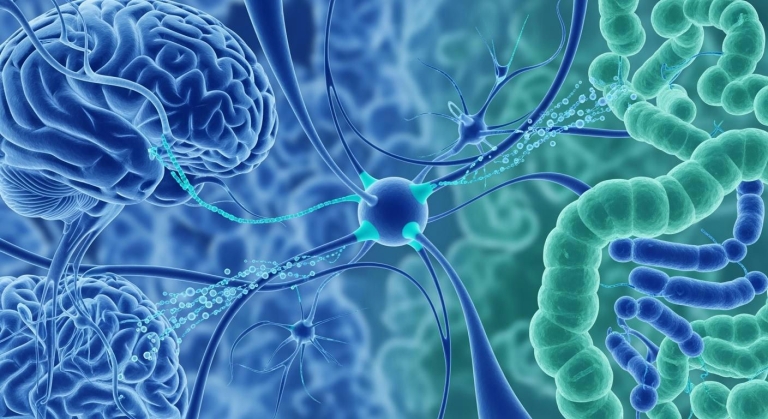Uterine Fibroids: Exploring Treatment Options Beyond Hysterectomy for Toronto Women
Uterine Fibroids: Exploring Treatment Options Beyond Hysterectomy for Toronto Women
When Sarah, a 42-year-old Toronto professional, learned she had uterine fibroids, her immediate fear was losing her uterus. Like many women, she believed hysterectomy was the only solution for her heavy periods and pelvic pain. However, modern medicine offers numerous alternatives that can preserve fertility and quality of life—options that many women don’t know exist.
Uterine fibroids affect up to 70% of Canadian women by age 50, yet conversations about treatment alternatives remain limited in many medical settings. Whether you’re experiencing symptoms now or planning for your reproductive future, understanding all available options empowers you to make informed decisions about your health. This comprehensive guide explores the latest fibroid treatments available in Toronto, helping you navigate choices that align with your lifestyle, fertility goals, and overall wellbeing.
Table of Contents
- • Understanding Uterine Fibroids
- • Why Consider Alternatives to Hysterectomy
- • Medical Management: Non-Surgical First Steps
- • Minimally Invasive Procedures
- • Surgical Options That Preserve Your Uterus
- • Natural and Complementary Approaches
- • Making Your Treatment Decision
- • Long-Term Management and Monitoring
- • Planning for the Future
- • Taking Action: Your Next Steps
- • Frequently Asked Questions
Understanding Uterine Fibroids: More Common Than You Think
Uterine fibroids are non-cancerous growths that develop in or around the uterus. Despite their prevalence, many women suffer in silence, unaware that their symptoms stem from these benign tumors. At Care&, healthcare providers see firsthand how fibroids impact women’s daily lives—from missing work due to heavy bleeding to avoiding social events because of unpredictable symptoms.
Types and Symptoms That Affect Your Daily Life
Fibroids vary significantly in size, location, and impact. Some women have multiple small fibroids causing minimal symptoms, while others experience life-altering effects from a single large growth. Common symptoms include:
- • Heavy menstrual bleeding that soaks through protection hourly
- • Periods lasting longer than seven days
- • Pelvic pressure or pain
- • Frequent urination or difficulty emptying the bladder
- • Constipation or bloating
- • Pain during intercourse
- • Lower back pain
- • Reproductive challenges
Understanding your specific fibroid type helps determine the most effective treatment approach. Submucosal fibroids that grow into the uterine cavity often cause the heaviest bleeding, while subserosal fibroids pressing on other organs may trigger urinary symptoms. This personalized assessment is crucial for developing an effective treatment plan.
Care& App Feature: Track your menstrual symptoms, including flow intensity, duration, and associated pain levels, directly in the Care& app. This detailed tracking helps your healthcare provider identify patterns and make more informed treatment decisions.
Why Consider Alternatives to Hysterectomy?
While hysterectomy remains a definitive treatment for fibroids, it’s no longer the automatic first choice for many women. The decision to remove the uterus carries significant physical and emotional implications that deserve careful consideration.
Preserving Your Options and Your Health
Modern healthcare recognizes that women’s needs vary throughout their lives. A 35-year-old considering future pregnancy has different priorities than someone who has completed their family. Even for women not planning children, keeping the uterus can offer benefits including:
- • Maintaining natural hormone production
- • Preserving pelvic floor support
- • Avoiding surgical risks and recovery time
- • Keeping future treatment options open
- • Maintaining psychological wellbeing
At medical clinics across Toronto, healthcare providers increasingly emphasize patient-centered care that considers individual circumstances. This approach means exploring less invasive options first, reserving hysterectomy for cases where alternatives haven’t provided relief.
Medical Management: Non-Surgical First Steps
Before considering any procedure, many women find relief through medical management. These treatments can significantly reduce symptoms and may eliminate the need for surgery altogether.
Hormonal Treatments That Work
Several medications effectively manage fibroid symptoms by regulating hormones or reducing bleeding:
Birth Control Options
Oral contraceptives, hormonal IUDs, and other methods can lighten periods and reduce pain. The Mirena IUD, specifically, has shown excellent results for heavy bleeding while providing long-term contraception.
GnRH Agonists
These medications temporarily shrink fibroids by creating a reversible menopause-like state. While not suitable for long-term use, they can provide relief while planning other treatments or approaching natural menopause.
Tranexamic Acid
This non-hormonal medication reduces heavy bleeding during periods without affecting fibroid size. It’s particularly helpful for women who cannot or prefer not to use hormonal treatments.
Selective Progesterone Receptor Modulators
These newer medications can shrink fibroids and reduce bleeding, though availability varies and requires careful monitoring.
Creating Your Medical Management Plan
Successful medical management requires regular monitoring and adjustment. Healthcare providers at Care& work with patients to track symptom changes through their comprehensive health app, allowing real-time adjustments to treatment plans. This ongoing support helps optimize results while minimizing side effects.
Need personalized guidance for your fibroid symptoms?
Schedule a comprehensive appointment with a Care& healthcare provider to explore all your treatment options. Our team takes the time to understand your specific needs and goals.
Minimally Invasive Procedures: Modern Solutions
When medical management isn’t sufficient, several minimally invasive procedures offer effective alternatives to hysterectomy. These options typically involve shorter recovery times and preserve the uterus.
Uterine Artery Embolization (UAE)
This innovative procedure blocks blood flow to fibroids, causing them to shrink naturally. Performed by interventional radiologists, UAE involves:
- • Small incision in the groin
- • Guided catheter placement
- • Injection of particles to block fibroid blood supply
- • Same-day or overnight hospital stay
- • Return to normal activities within 1-2 weeks
Studies show UAE effectively reduces symptoms in 85-90% of women, with results lasting years. It’s particularly suitable for women with multiple fibroids or those who haven’t responded to other treatments.
MRI-Guided Focused Ultrasound
This non-invasive treatment uses focused sound waves to heat and destroy fibroid tissue. Performed while lying in an MRI scanner, the procedure requires:
- • No incisions or anesthesia
- • Real-time imaging for precise targeting
- • Outpatient treatment
- • Immediate return to normal activities
While not suitable for all fibroid types, focused ultrasound offers an excellent option for women with few, accessible fibroids who want the least invasive approach possible.
Endometrial Ablation
For women primarily troubled by heavy bleeding rather than fibroid bulk, endometrial ablation destroys the uterine lining to reduce or eliminate periods. Various techniques exist, including:
- • Radiofrequency ablation
- • Thermal balloon therapy
- • Cryoablation
- • Hydrothermal ablation
This procedure works best for women who have completed childbearing, as pregnancy after ablation carries serious risks. Success rates are highest in women with smaller fibroids that don’t distort the uterine cavity.
Surgical Options That Preserve Your Uterus
When fibroids require surgical removal but preserving fertility remains important, myomectomy offers an effective solution. This surgery removes fibroids while leaving the uterus intact.
Types of Myomectomy
Hysteroscopic Myomectomy
For fibroids within the uterine cavity, this approach uses a thin telescope inserted through the vagina. Benefits include:
- No abdominal incisions
- Outpatient procedure
- Quick recovery (few days)
- Minimal pain
- Preserved fertility
Laparoscopic Myomectomy
Using small incisions and a camera, surgeons remove fibroids from the uterine wall. This technique offers:
- Shorter hospital stay (usually overnight)
- Less pain than open surgery
- Faster recovery (2-4 weeks)
- Smaller scars
- Good pregnancy outcomes
Abdominal Myomectomy
For large or numerous fibroids, open surgery may be necessary. While requiring longer recovery, it allows complete fibroid removal and uterine reconstruction.
Optimizing Surgical Outcomes
Success with myomectomy depends on several factors, including fibroid location, surgical expertise, and post-operative care. At medical clinics like Care& in Toronto, nurse practitioners coordinate pre and post-surgical care, ensuring comprehensive support throughout the process. This includes managing recovery symptoms, monitoring healing, and planning future pregnancy when desired.
Care& App Feature: Use the secure admin chat to communicate with your healthcare provider before and after procedures. Ask questions, report symptoms, and receive guidance without waiting for an appointment.
Natural and Complementary Approaches
While natural remedies cannot eliminate fibroids, many women find complementary approaches helpful for symptom management and overall wellbeing.
Dietary Modifications That Make a Difference
Research suggests certain dietary changes may slow fibroid growth and reduce symptoms:
Increase green vegetables: Cruciferous vegetables like broccoli and kale support hormone metabolism
Choose organic when possible: Reducing pesticide exposure may help hormone balance
Limit red meat: Studies link high consumption to increased fibroid risk
Add vitamin D: Many women with fibroids have low levels; supplementation may help
Stay hydrated: Proper hydration supports overall pelvic health
Mind-Body Practices for Symptom Relief
Stress management plays a crucial role in hormone balance and pain perception. Effective practices include:
Yoga: Specific poses can relieve pelvic pressure and improve circulation
Meditation: Regular practice reduces stress hormones that may influence fibroid growth
Acupuncture: Some women report reduced bleeding and pain
Massage therapy: Can help with pain management and stress reduction
Herbal Supplements: Proceed with Guidance
While some herbs show promise for fibroid symptoms, they require careful use:
Green tea extract: May slow fibroid growth
Curcumin: Anti-inflammatory properties may help symptoms
Chasteberry: Can help regulate hormones
Milk thistle: Supports liver function and hormone metabolism
Always consult healthcare providers before starting supplements, as some can interact with medications or affect hormone-sensitive conditions.
Making Your Treatment Decision: A Personalized Approach
Choosing the right fibroid treatment involves weighing multiple factors unique to your situation. This decision-making process benefits from comprehensive healthcare support and ongoing monitoring.
Key Factors to Consider
Your Symptoms
Treatment urgency depends on how fibroids affect your daily life. Severe anemia from heavy bleeding requires prompt intervention, while mild symptoms might respond to conservative management.
Fertility Goals
Women planning pregnancy need treatments that preserve reproductive function. Discuss timeline and fertility preservation options with healthcare providers.
Fibroid Characteristics
Size, location, and growth rate influence treatment success. Regular monitoring through ultrasounds helps track changes and adjust plans accordingly.
Your Lifestyle
Recovery time, activity restrictions, and treatment schedules should align with work and family commitments. Some women prefer definitive one-time treatments, while others choose ongoing management.
Medical History
Existing conditions, previous surgeries, and medication sensitivities affect treatment options. Comprehensive health records through platforms like the Care& app ensure providers have complete information for safe recommendations.
Getting Comprehensive Support
Navigating fibroid treatment requires ongoing support from knowledgeable healthcare providers. At Care& Family Health, nurse practitioners offer unlimited appointments to address concerns as they arise, whether through in-person visits at their Yorkville medical clinic or Lawrence Park medical clinic locations, or through convenient telehealth services. This continuous access ensures you never feel alone in managing your condition.
Ready to explore your fibroid treatment options?
Receive personalized guidance from Care& healthcare providers who take the time to understand your unique needs and concerns.
Long-Term Management and Monitoring
Regardless of the treatment chosen, fibroids require ongoing attention to maintain optimal health and catch any changes early.
Creating Your Monitoring Schedule
Regular check-ups help track treatment effectiveness and detect new fibroid growth:
- • Annual pelvic exams: Basic screening for all women
- • Ultrasounds: Every 6-12 months for active monitoring
- • Symptom tracking: Monthly documentation of bleeding patterns and pain
- • Blood work: Periodic checks for anemia and hormone levels
Healthcare providers can establish personalized monitoring schedules based on your specific situation. The Care& medical app makes tracking symptoms convenient, allowing real-time sharing with your healthcare team for prompt adjustments.
Care& App Feature: Upload and access all your test results and imaging reports in one secure location. Share this information with specialists as needed without redundant testing or paperwork delays.
Lifestyle Strategies for Long-Term Success
Maintaining fibroid treatment results involves ongoing lifestyle attention:
Exercise Regularly
Moderate activity improves circulation, reduces inflammation, and helps maintain healthy weight—all factors in fibroid management.
Manage Stress Proactively
Chronic stress affects hormone balance. Build sustainable stress management practices into daily routines.
Maintain Healthy Weight
Excess weight increases estrogen production, potentially stimulating fibroid growth. Work with nutrition counseling services for sustainable approaches.
Limit Environmental Estrogens
Reduce exposure to plastics, certain cosmetics, and pesticides that may disrupt hormone balance.
Planning for the Future
Understanding that fibroids can recur helps set realistic expectations and maintain proactive health management. Women who’ve successfully treated fibroids should:
- • Continue regular monitoring even when symptom-free
- • Maintain healthy lifestyle habits
- • Stay informed about new treatment developments
- • Build strong relationships with healthcare providers
- • Plan pregnancies thoughtfully with medical guidance
- • Consider treatment timing in relation to menopause
For women approaching menopause, fibroids often shrink naturally as estrogen levels decline. This timeline factors into treatment decisions, as temporary management might suffice until natural resolution occurs.
Taking Action: Your Next Steps
Living with fibroids doesn’t mean accepting diminished quality of life. Today’s treatment options offer real solutions that preserve your choices while effectively managing symptoms. Start by:
- Documenting your symptoms: Track bleeding patterns, pain levels, and impact on daily activities
- Gathering your medical history: Compile previous ultrasounds, treatments tried, and family history
- Identifying your priorities: Clarify fertility goals, lifestyle needs, and treatment preferences
- Seeking comprehensive evaluation: Schedule appointments with healthcare providers who take time to understand your complete situation
At Care&, the approach to women’s health emphasizes thorough evaluation and personalized treatment planning. Through unrushed appointments that start on time, patients receive the attention needed to explore all options fully. Whether you’re just beginning to investigate symptoms or seeking alternatives after unsuccessful treatments, comprehensive support makes all the difference.
Ready to take control of your fibroid symptoms?
Our nurse practitioners provide personalized care tailored to your unique health needs and goals.
No lengthy wait times. Same-day appointments often available.
Frequently Asked Questions
How do I know if my symptoms are caused by fibroids or something else?
Many conditions can cause heavy bleeding and pelvic pain, making proper diagnosis essential. Comprehensive evaluation including pelvic examination, ultrasound, and sometimes MRI can identify fibroids and rule out other conditions. At Care&, nurse practitioners coordinate diagnostic testing through on-site lab services and imaging referrals, ensuring accurate diagnosis while maintaining continuity of care through your healthcare journey.
Can fibroids turn into cancer?
Uterine fibroids are benign (non-cancerous) growths, and the risk of a fibroid becoming cancerous is extremely rare—less than 1 in 1,000. However, a cancerous growth called leiomyosarcoma can sometimes be mistaken for a fibroid, which is why proper monitoring and evaluation of rapidly growing masses is important. Regular check-ups help ensure any changes are detected early.
Will my fibroids grow back after treatment?
Recurrence risk varies by treatment type. Medical management controls symptoms but doesn’t eliminate fibroids. Procedures like UAE and ablation provide long-lasting results but don’t prevent new fibroid formation. Myomectomy successfully removes existing fibroids, but new ones can develop, especially in younger women. Only hysterectomy completely prevents recurrence. Regular monitoring through your medical clinic helps catch any new growth early when it’s most treatable.
How long do I need to wait before trying to conceive after fibroid treatment?
Recovery time before pregnancy varies significantly by treatment. After myomectomy, most surgeons recommend waiting 3-6 months for complete uterine healing. UAE requires similar timing, though some specialists suggest longer waits. Medical management with certain drugs requires stopping treatment and waiting for the medication to clear your system. Women’s health providers at Care& can coordinate preconception planning, ensuring optimal timing and health status before attempted conception.
Are there any new treatments for fibroids on the horizon?
Research continues to advance fibroid treatment options. Current investigations include new medications that shrink fibroids with fewer side effects, improved minimally invasive techniques, and gene therapy approaches. Some Toronto medical clinics participate in clinical trials, offering access to cutting-edge treatments. Staying connected with knowledgeable healthcare providers ensures you learn about new options as they become available.
Less Wait Time, More Face Time
Visit www.careand.ca to register
Disclaimer: This article is for informational purposes only and does not constitute medical advice. Always consult with a qualified healthcare provider for personal medical guidance. The information provided is general in nature and may not apply to individual circumstances.







